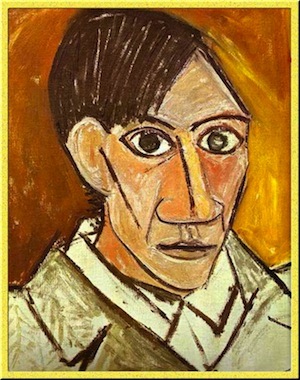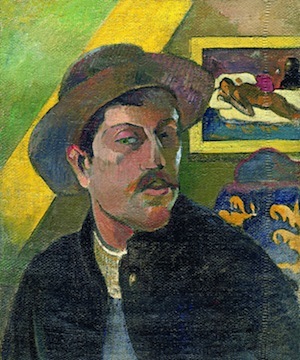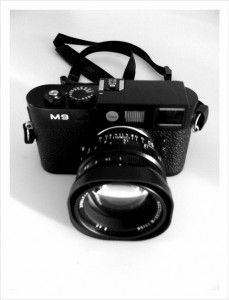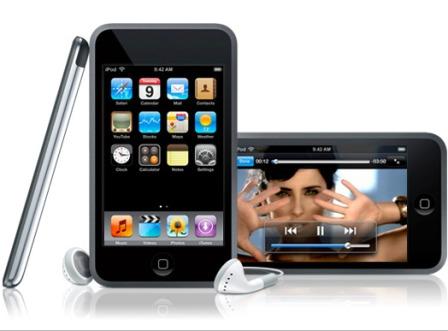
The book “I Was Vermeer” by Frank Wynne got me thinking…
It’s about Han van Meegeren, a great 20th century art forger. The story exposes “fine art” as arbitrarily defined by critics. Talent is prerequisite, not predeterminer. The book went a long way toward defining art.
The prosecutor at van Meegeren’s trial said, “The primary function of art is to rouse emotion in the viewer.” He was speaking of fine art.
Art in general terms, as opposed to “fine art,” is rather broad. Writing, design, drawing, photography, music, mashups, sampling, typography, page setup, display and organization, are ALL aspects of artistic expression. Expression being anything which can be interpreted. Even street signs are designed.
When one looks, everything interpreted has artistic elements.
In some ways, everything is art.
In a world in which most of the media’s audience have become producers, knowing that fact is important.
DEFINING THE VALUE OF ART:
At my school our primary use of technology publishing is in 5th grade. “Think about writing to a specific audience.” “Can we choose pictures to better tell your story?” “Are there better videos to embed, which help the reader understand?” “Could we choose colors which are less distracting?” “Look for music which fits your message and audience.” Teachers are directing students–during social studies.
 Pablo Picasso said, “Every child is an artist. The problem is how to remain an artist once he grows up.” In the 20th century, the real question was how to remain an artist while going through modern education. “Art” has been considered an elective. “You’ll never make money as an artist, dear. Better concentrate on math.”
Pablo Picasso said, “Every child is an artist. The problem is how to remain an artist once he grows up.” In the 20th century, the real question was how to remain an artist while going through modern education. “Art” has been considered an elective. “You’ll never make money as an artist, dear. Better concentrate on math.”
Looking at Powerpoint, Online Video, Blogging, Flickr, Blip and Twitter one quickly comes to the realization that everything is art. The challenge now is, how to train our children to be better and better artists.
Teachers are falling in line, and one reason it’s working: Nobody has said out loud, “But all this stuff is art!”
God forbid, because in education, art is both worthless and calling it art relegates it all the weekly art “special.”
Whatever we don’t call it, the issues and skills sets used to communicate online, are all from ART.
ART AND PLAGIARISM:
“Those who do not want to imitate anything, produce nothing.” — Salvador Dali

 “Art is either plagiarism or revolution.” — Paul Gauguin. It also could be both, or neither. Well timed plagiarism (using Gauguin’s meaning as a copy of style) can be a cultural phenomenon–a social meme, a viral sensation. Artistic revolution never seen, isn’t.
“Art is either plagiarism or revolution.” — Paul Gauguin. It also could be both, or neither. Well timed plagiarism (using Gauguin’s meaning as a copy of style) can be a cultural phenomenon–a social meme, a viral sensation. Artistic revolution never seen, isn’t.
Many bloggers (see Tumblr) are simply self-styled “curators.” They openly post things they find on the web into their blogs. It’s called “CopyPasta” in the vernacular of the Internet. Those bloggers who curate sites of other peoples’ photos, statements and posts are creating a thing in itself. A thing with a unique point of view.
“Forgeries are an ever-changing portrait of human desires. Each society, each generation, fakes the things it covets most,” wrote Mark Jones in Fake? The art of Deception. And Marshall McLuhan said, “Art is anything you can get away with.” In today’s digital economy, copying the art one covets most, is very easy to get away with.
Taking and using people’s copyright is a problem indeed, but is it art? I would say, definitely.
The forger van Meegeren was clearly an equal of Vermeer in the eyes of the critics. On trial for selling an authentic Vermeer to the Nazis, van Meegeren had to expose himself. When asked to prove the claim he had forged so many accepted Vermeers by copying a Vermeer in front of witnesses, van Meegeren said anyone could copy an existing painting of a great master. Instead, he forged an original Vermeer. When finished, the critics agreed.
Are forgeries art? I would say yes.
EXPOSURE TO THE CRITICS:
“Painting: the art of protecting flat surfaces from the weather and exposing them to the critic.” — Ambrose Bierce, The Devil’s Dictionary. Writing and other multimedia production could work within the same definition.
Is the beauty of a spiderweb in the morning dew, art? Probably not.When two people happen upon the spiderweb and both start arguing over why it is beautiful. Is that art? How about if one of them takes a snapshot (not some artsy photograph) of the spiderweb, frames it on their wall, and then two others start arguing over why the picture is beautiful? Well then sure, that’s art. But is it the photo or the spiderweb that’s art? Clearly the spider did most of the work. If it is a straight snapshot, it would really be a question. One could say the photographer “recognized” it as art, but what is the art recognized? At what point along this continuum does the “art” happen? Perhaps when people start to discuss the interpretation.
In many ways, when the interpretation of something can be criticized, it becomes art.
 “When a true genius appears in the world, you may know him by this sign, that the dunces are all in confederacy against him.” — Jonathan Swift
“When a true genius appears in the world, you may know him by this sign, that the dunces are all in confederacy against him.” — Jonathan Swift
With many blogs and other Internet publishing being so personal, it sometimes seems the critics are all in confederacy against one, but it is the nature of art.
What we, the new producer class, create–are things to be interpreted. Almost everything on the Internet is open to criticism, and getting used to that criticism is one of the real-world lessons for writer/producers on the web.
On the Internet, “comments” is a ubiquitous feature from photos to blogs, from wiki pages to mapping tours. Comments are something we need to teach children to moderate–which comments does one approve, respond or delete? Dealing with critics is part of digital literacy. It certainly is a reality our children will encounter, as all of them will have a significant digital footprint entering middle school.
OVERCOMING THE CRITICS:
“To be one’s self, and unafraid whether right or wrong, is more admirable than the easy cowardice of surrender to conformity.” — Irving Wallace, Saturday Evening Post.
“It is not the critic who counts, not the man who points out how the strong man stumbled, or where the doer of deeds could have done better. The credit belongs to the man who is actually in the arena, whose face is marred by dust and sweat and blood, who strives valiantly, who errs and comes short again and again, who knows the great enthusiasms, the great devotions, and spends himself in a worthy cause, who at best knows achievement and who at the worst if he fails at least fails while daring greatly so that his place shall never be with those cold and timid souls who know neither victory nor defeat.”– Theodore Roosevelt
It takes courage to produce, even more when there are critics ready to criticize.
WE ARE VERMEER:
Anyone who communicates in this modern world is an artist. You are either a good artist or a bad artist, but an artist you are–like it or not. We are all artists, and our students who are publishing are artists. To acknowledge this in our pursuit of education and technology publishing, will help everyone.


